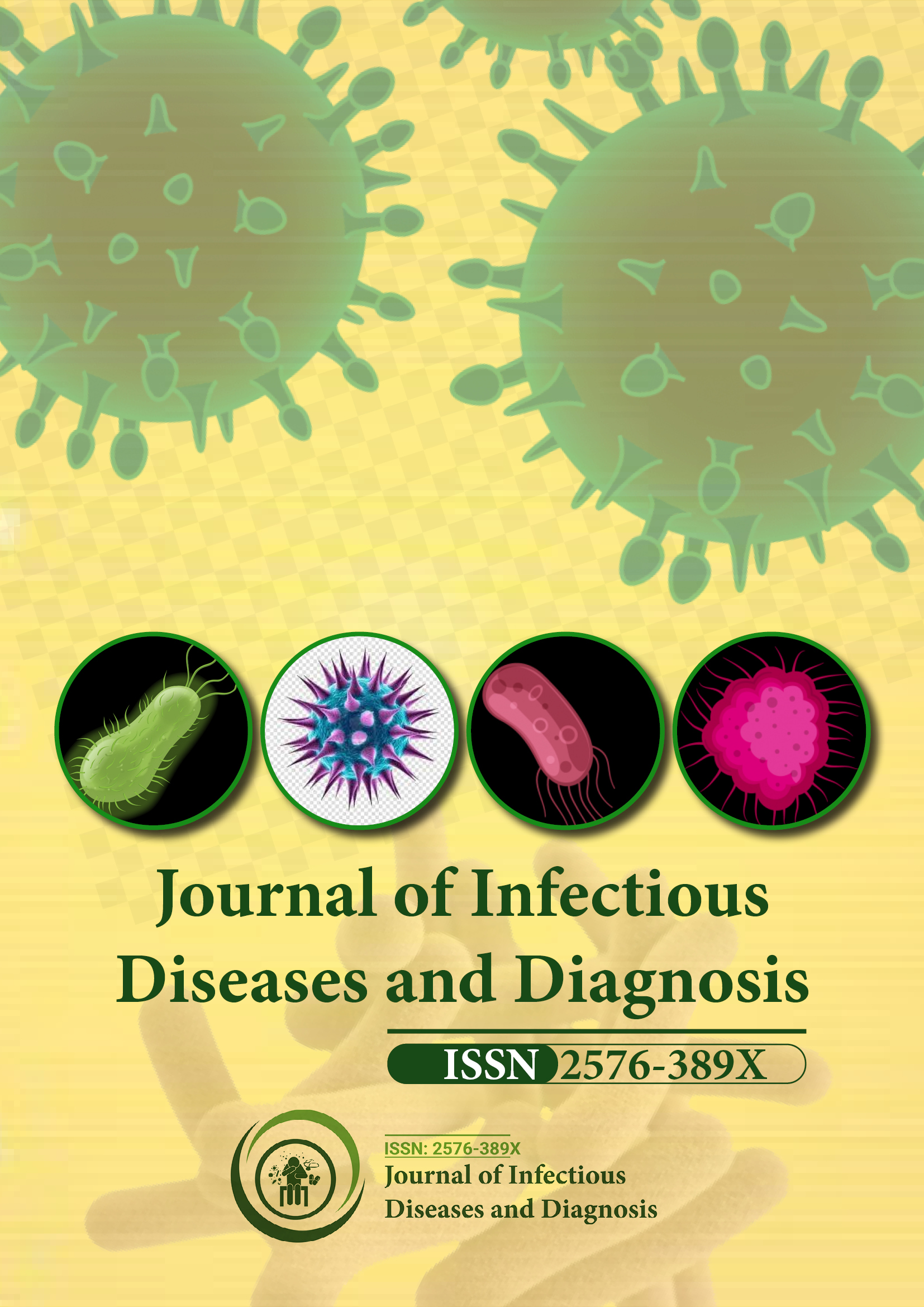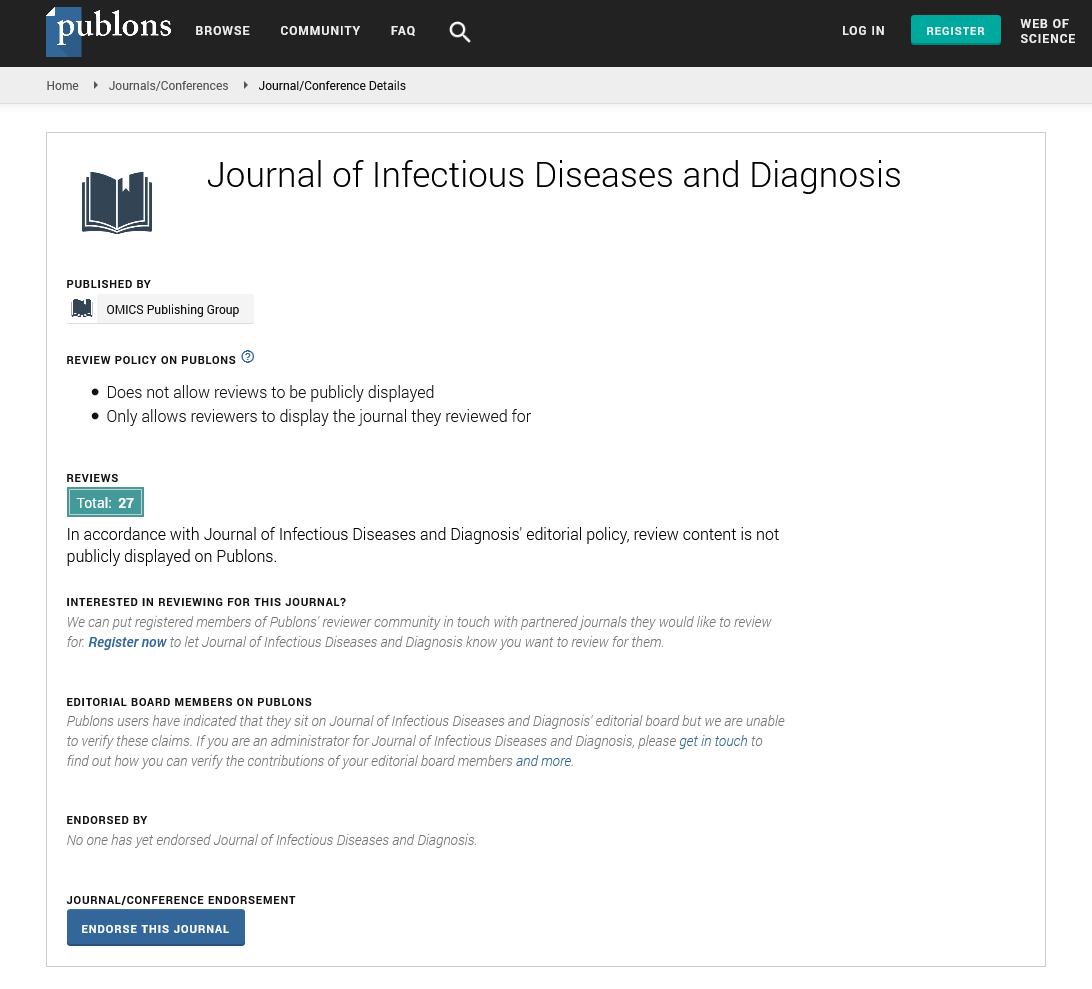Indexed In
- RefSeek
- Hamdard University
- EBSCO A-Z
- Publons
- Euro Pub
- Google Scholar
Useful Links
Share This Page
Journal Flyer

Open Access Journals
- Agri and Aquaculture
- Biochemistry
- Bioinformatics & Systems Biology
- Business & Management
- Chemistry
- Clinical Sciences
- Engineering
- Food & Nutrition
- General Science
- Genetics & Molecular Biology
- Immunology & Microbiology
- Medical Sciences
- Neuroscience & Psychology
- Nursing & Health Care
- Pharmaceutical Sciences
Abstract
Clinico-Demographic Profile Treatment Outcomes and Rare Presentations of Childhood brucellosis: A Hospital Based Prospective Study from North India
Aasiya Unjum*, Zul Edain Hassan and Aijaz Ahmed Bhat
Objective: To describe the clinical and demographic profile, treatment outcomes and rare presentations of brucellosis in children in Kashmir, highlight the risk factors associated with acquisition of brucellosis in childhood and suggest measures to prevent animal to human transmission of disease in this age group.
Design and setting: Hospital based prospective study conducted in Department of Pediatrics Sher I Kashmir Institute Of Medical Sciences, Soura Srinagar over a period of two years from January 2018 to January 2020.
Participants: Children in the age group of 1 to 18 years with a history of Pyrexia of unknown origin or with a history of contact with animals or history of consumption of unpasteurized milk were included in the study.
Methods: A total of 1500 patients were screened for brucellosis out of which 15 (0.6%) patients with either a positive blood culture or Serum Agglut ination Test (SAT) titre more than or equal to 1:160 were enrolled in the study . Informed written consent was obtained from the parents/guardians of all these children and their history and clinical examination was recorded in a preset proforma.
Results: Our study revealed a prevalence of 0.6 % in children. Males (60%) outnumbered females. 70% of the cases of brucellosis belonged to rural population. Consumption of unpasteurized milk was found to be an important risk factor for acquiring brucellosis in children. 60% of the children had consumed unpasteurized cow’s milk.
Mean age of children was 10.5 (± 4.2) years and 50% of the children were in the age group of 11 to 18 years. Most common presenting complaints were prolonged fever (73.3%), arthralgias and myalgias (26.6%). Hepatosplenomegaly was present in 05 (33.3%) patients. Low back pain was present in 03 (20%). Abdominal pain was present in 02 (13.3%) and Rash was present in 02 (13.3%). Few patients in our study had rare presentations. These included Arthiritis (n=01), Meningitis (n=01), Liver abscess (n=01), Epididymo orchitis (n=01) and Thrombocytopenia causing GI bleed (n=01).
10 (66.6%) patients in our study had a raised ESR and 04 (26.6%) patients had transaminitis. CBC showed Anemia in 06 (40%) patients, relative lymphocytosis in 05 (33.3%), leukopenia in 03 (20%), Thrombocytopenia in 01 (6.6%) and Pancytopenia in 01 (6.6%).
All patients were followed up for six months after the completion of therapy. Relapse was reported in one patient within two weeks of completion of therapy. None of the patients in our study died.
Conclusion: In conclusion brucellosis typically presents as a prolonged indolent disease with varied presentations in endemic regions. It may be overlooked and misdiagnosed due to its versatile presentations and overlap with tuberculosis and other such diseases. A high index of suspicion is needed for its diagnosis Prompt initiation and completion of therapy are important factors determining its outcome in children.
Published Date: 2021-09-28; Received Date: 2021-09-07

